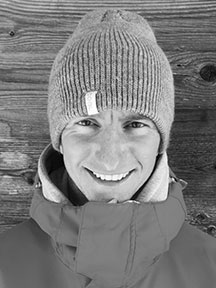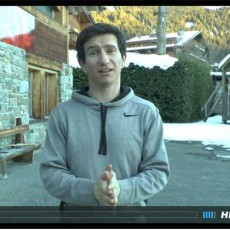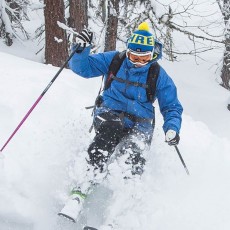
“Before any training session / ski lesson it’s vital to warm up”
We’ve all heard we need to warm up.
But why?
A warm up is necessary to minimise the chances of injury. As well as having lots of physical benefits it’s also a great way to prepare your mind for the session ahead. If you miss out the warm up and go into a session ‘cold’ your performance will be worse and you increase the risk of injury.
The science behind a warm up is to place the cardiovascular (heart), respiratory (lungs) and neuromuscular systems in a state of readiness for activity. What does that actually mean though?
Primarily you are doing it to increase your body temperature which will cause vasodilation (blood vessels widen) increasing blood supply and providing more oxygen to tissues and working muscles. Metabolic activity in muscle tissue is stimulated as a result. Warming up also helps mobilise major joints as fluid is released lubricating joints which will reduce the risk of injury.
What’s the best way to do this?
A very simple way to ‘warm up’ would be to have a hot shower or bath or wear lots of warm clothing. This will increase your body temperature however it won’t be very effective when it comes to preparing the rest of your body (muscles, mind, joints). This can be a great way to start a session but it shouldn’t be ‘the’ warm up.
I would recommend an active warm up that progressively works its way up to practicing actual moves that you will use in your training/ski session. The key to a warm up is to be progressive. Work your way up your body and go from small moves to big moves.
[gpp_divider type=”solid” color=”grey”]Structuring your warm up:
An active warm up can be broken down into 3 distinct stages:
Stage 1
Mobilise your major joints – gently rotate your ankles, then knees, then hips, then shoulders, then neck
Stage 2
A pulse raiser – for example a jog working up to light sprints
Stage 3
Dynamic stretches
[gpp_divider type=”solid” color=”grey”]So what is “dynamic” stretching?
Dynamic stretching is NOT like static stretching.
Static stretching, as the name suggests, is a stretch performed when you are standing still and only targets one or maybe two muscles groups. It should only ever be done at the end of a session. The reason for this is that static stretching will lower your heart rate, exactly the opposite of what we are trying to achieve. It also weakens muscles and impacts performance. Static stretching is useful to improve flexibility but it should not be part of the warm up.
You can think of dynamic stretching as switching muscles ‘on’ and static stretching as switching them off.
Dynamic stretching is a series of active movements – the opposite of static stretching really. Examples of dynamic stretches can be seen in the link below. Again when starting a dynamic stretching routine, movements should start off slowly and then progress to bigger moves that will be incorporated in your actual routine e.g from arm and leg swings all the way through to squats and lunges.
[gpp_divider type=”solid” color=”grey”]A simple little video to show you what you can do…
Here are some simple ideas for dynamic stretches:
Dynamic Warm Up, 4 Quick Stretches from EZIA Athletic Club Nantucket on Vimeo.
Level 3 REPS personal trainer
Level 4 BASI ski instructor



